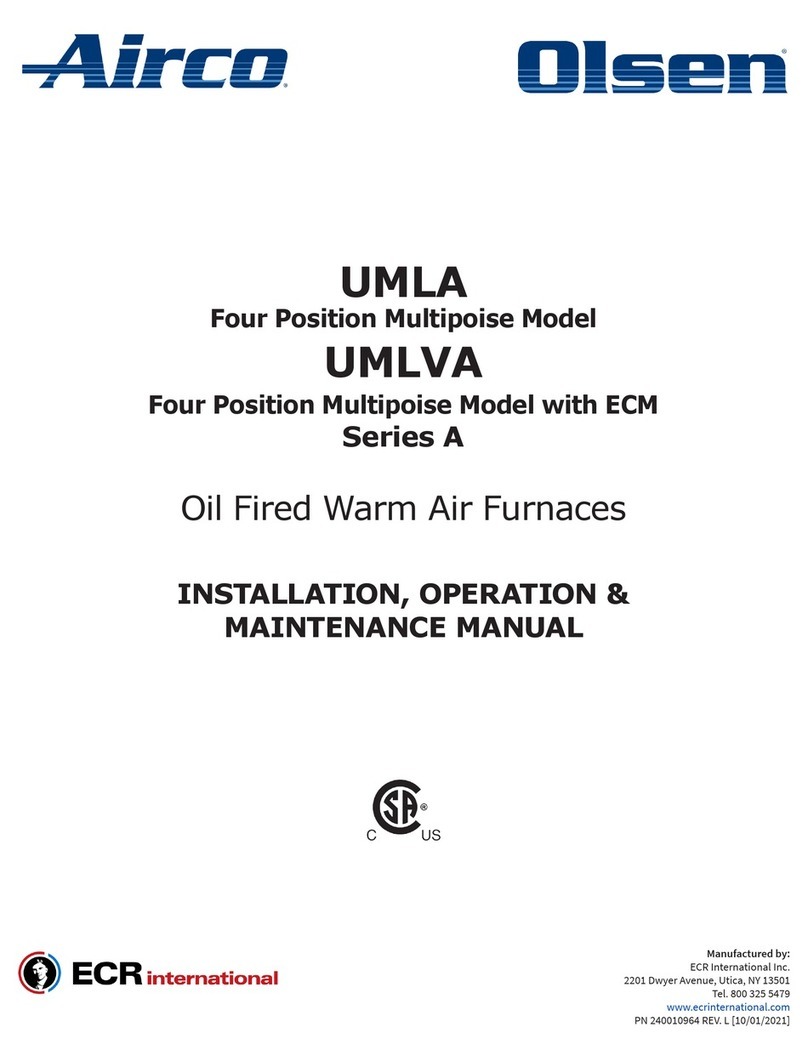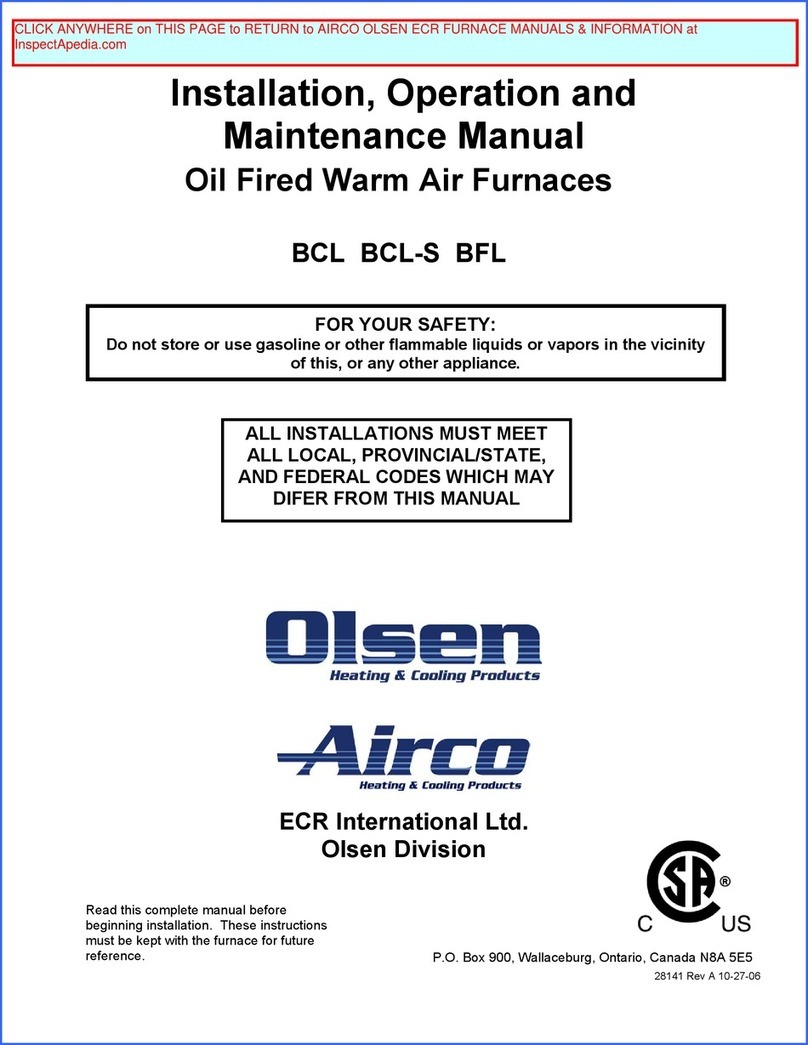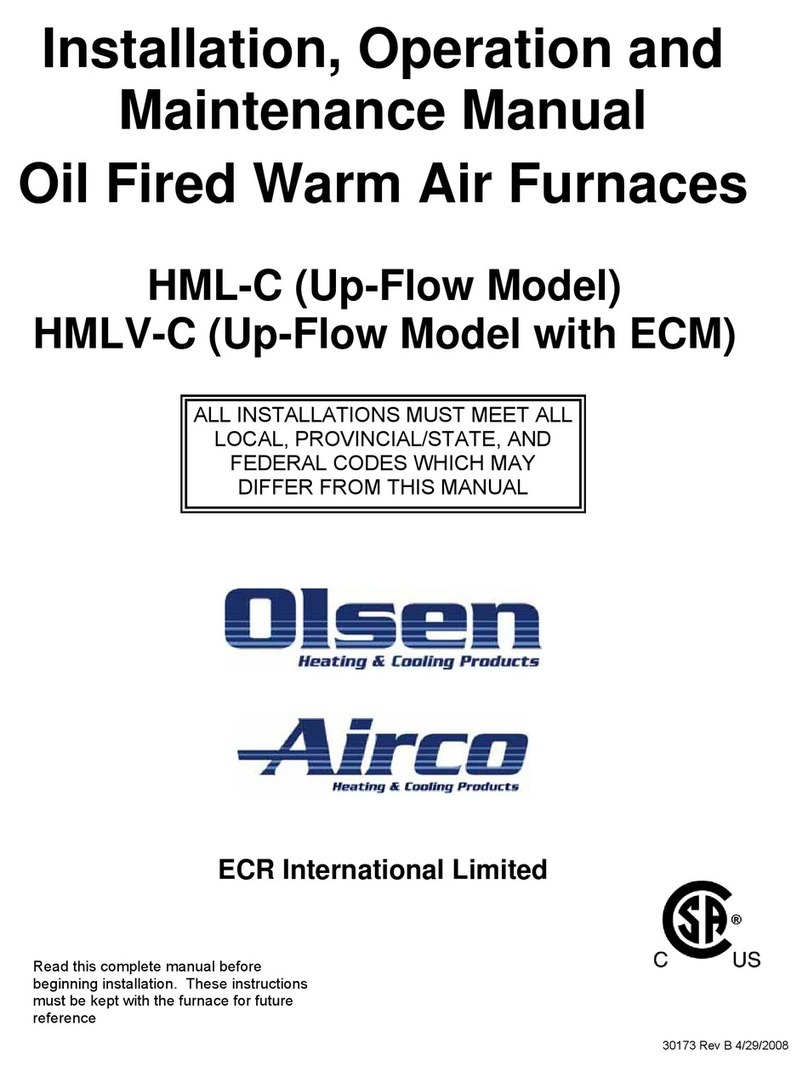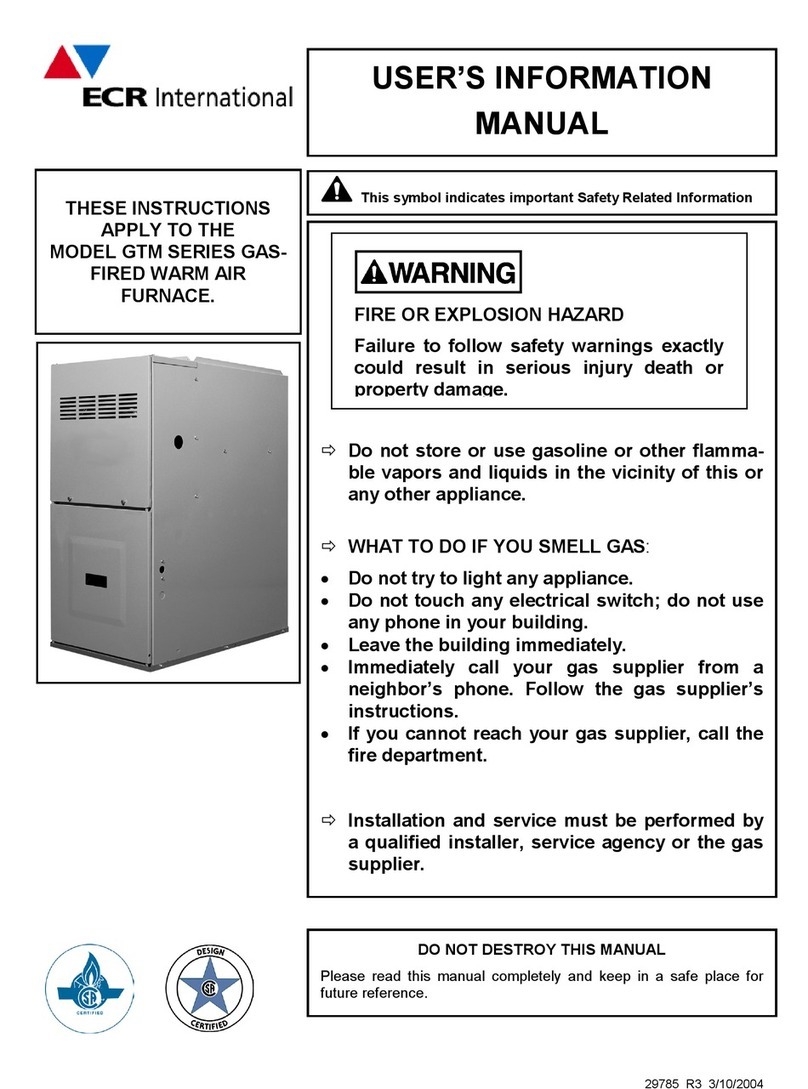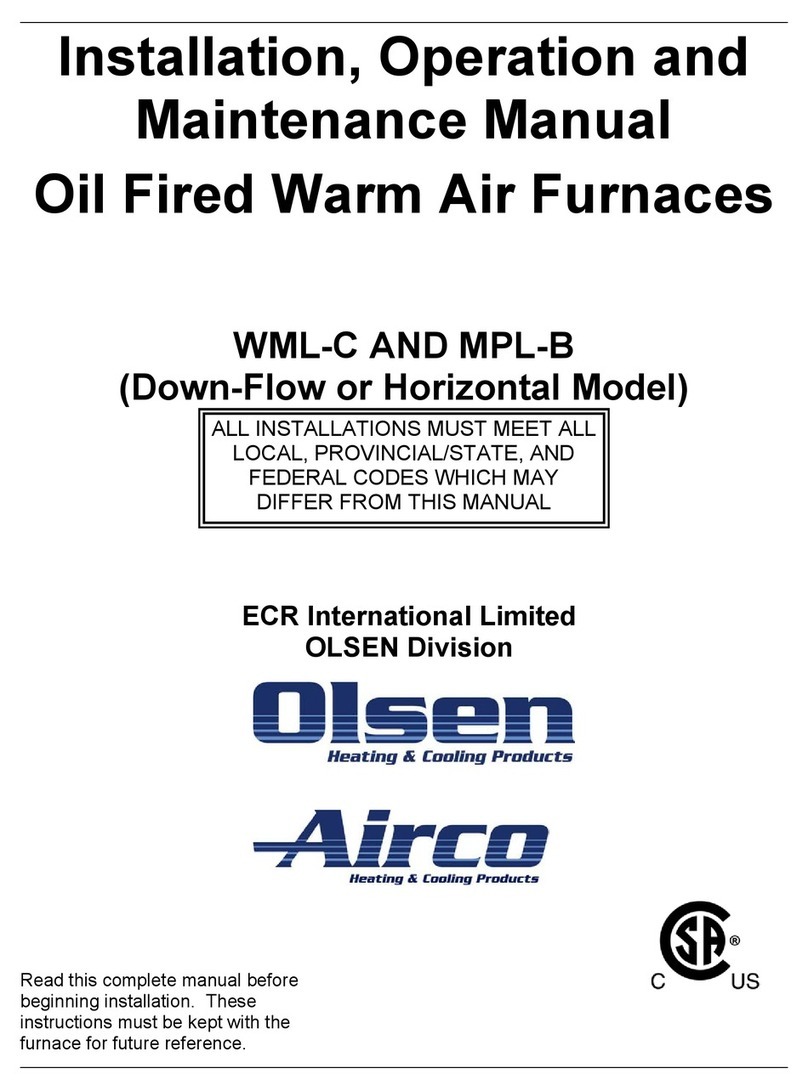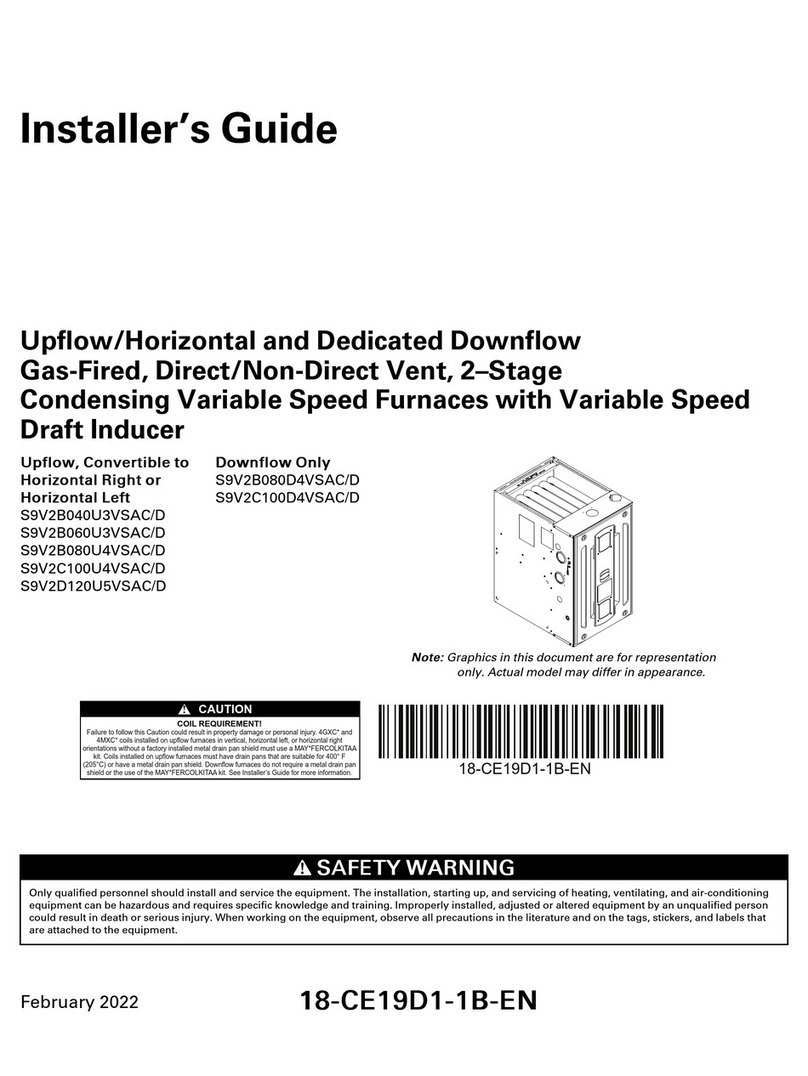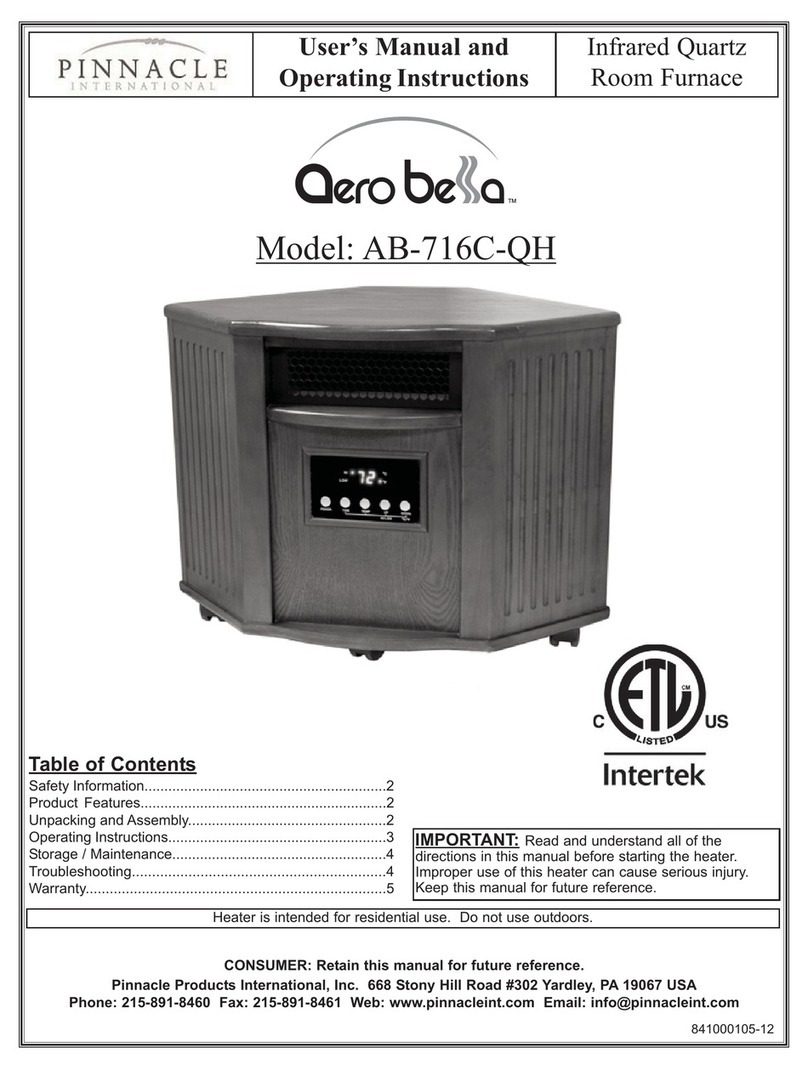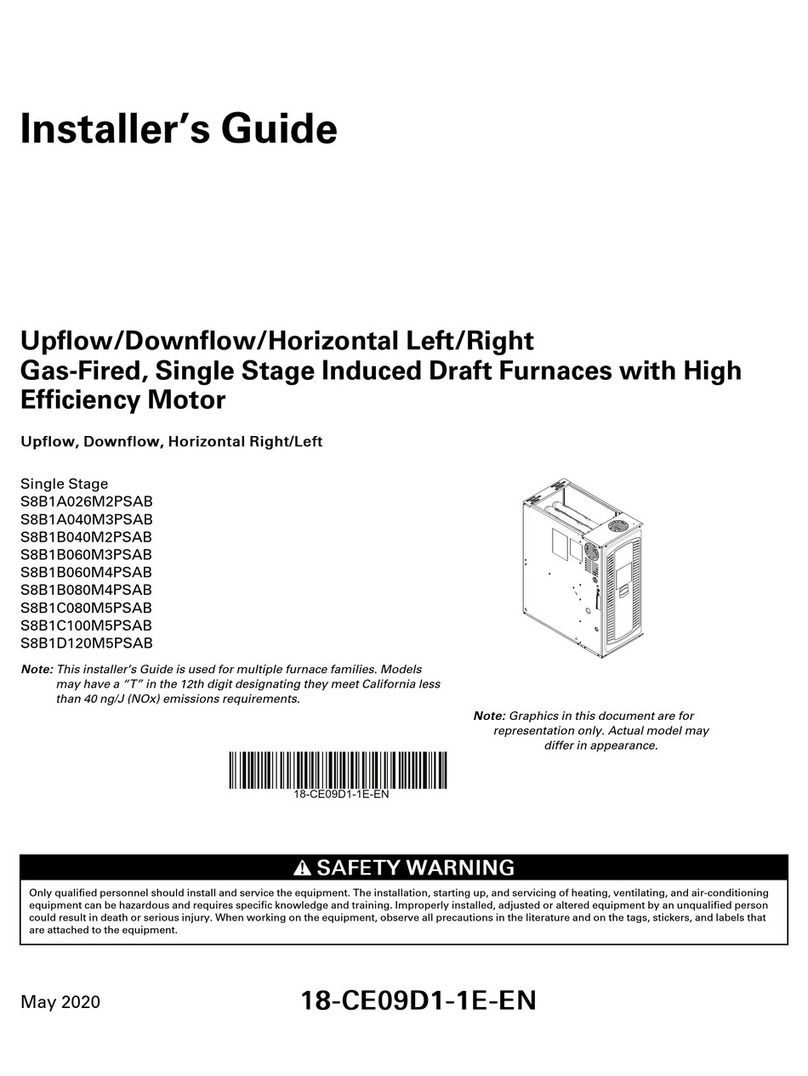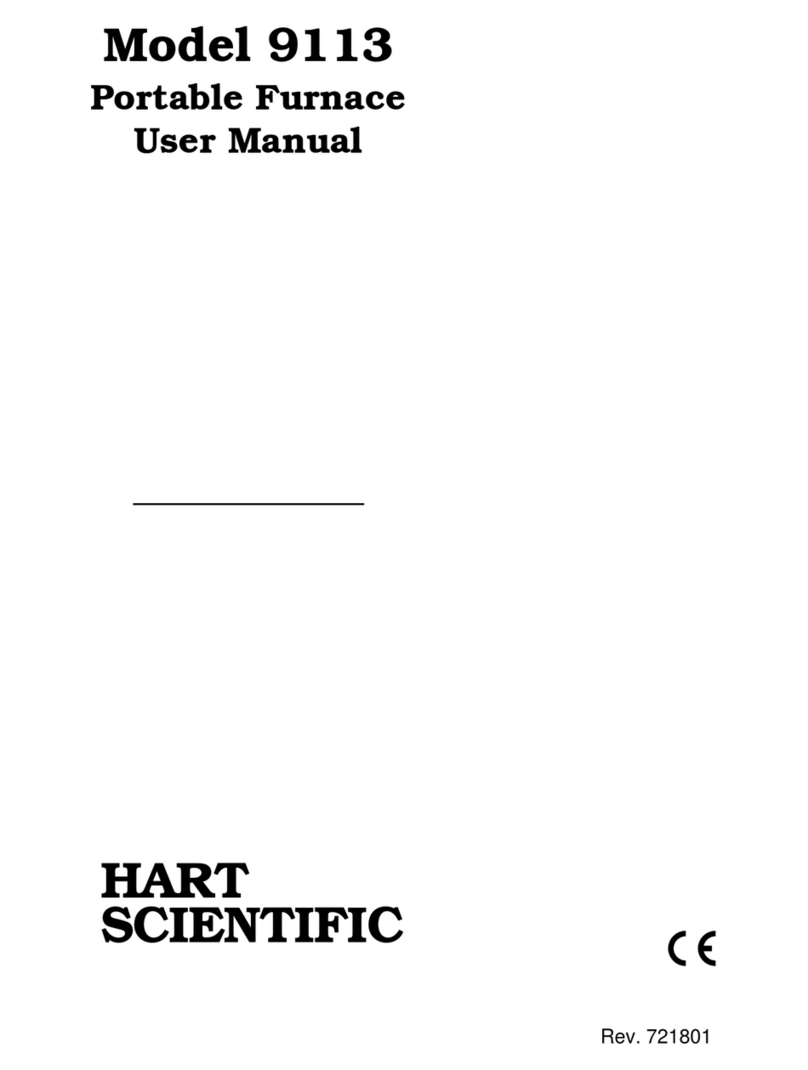
7
29783 R2 1/24/2003
2. Remove the blower access door
3. Remove the screws fastening the
blower assembly to the blower di-
vision panel.
4. Pull the blower assembly out.
5. Once the blower assembly has
been removed, the coils may be
vacuumed with the soft brush at-
tachment, (see Figure 7).
Be careful not to bend the fins
when cleaning. You may wish to
leave this maintenance procedure
to your service technician.
6. Match up the blower rails with the
hangers on the underside of the
blower division panel, then slide
the blower assembly back into po-
sition
7. Replace the screws fastening the
blower assembly to the blower di-
vision panel.
8. Replace the blower access door.
9. Restore electrical power to the
furnace.
Routine cleaning the interior of the
recovery coil should not be necessary.
If evidence develops indicating that a
cleaning is necessary, it should be
done by a trained and qualified service
technician. Evidence may include large
amounts of dirt or debris building up in
the condensate drain line.
The burner area should be inspected
and cleaned periodically. Be careful
when cleaning around the burner area.
The hot surface igniter is fragile and
will break easily. Do not touch the hot
surface igniter or flame rod
NEVER ATTEMPT TO CLEAN THE
BURNER AREA WHILE THE BURN-
ERS ARE OPERATING. DOING SO
MAY RESULT IN EXPLOSION OR
FIRE RESULTING IN SEVERE PER-
SONAL INJURY OR DEATH.
ALWAYS DISCONNECT THE ELEC-
TRICAL SUPPLY TO THE FURNACE
BEFORE REMOVING THE BURNER
COMPARTMENT ACCESS DOOR.
The furnace gas train is designed to
operate as a sealed unit. Be sure that
the burner compartment access door is
properly in place before attempting to
restart the furnace.
The furnace achieves its high efficiency
in three general areas. First, there is
no wasteful standing pilot. The furnace
consumes no gas in between cycles.
Secondly, the furnace is designed to
allow very small amounts of excess air
in the combustion process. Older fur-
naces had heat exchangers which
were commonly 40% larger than nec-
essary for complete combustion. While
this prevented the creation of carbon
monoxide, the heated excess air was
expelled up the chimney where it could
not benefit the interior of the home.
Special safety controls now prevent the
formation of carbon monoxide.
The third general area is the recovery
of the latent heat contained in the flue
gas, which is comprised of water vapor
and carbon dioxide. By condensing the
flue gas in the furnace recovery coil,
heat that would otherwise be wasted to
the outdoors, is captured and redi-
rected into the duct system where it
contributes to home comfort. Each
pound of condensation formed re-
leases approximately 970 BTU’s Your
furnace may condense up to ½ gallon
(5 pounds) of water per hour if running
continuously.
This condensation must be properly
disposed into a sump or drainage sys-
tem. The condensate lines must re-
main clear and free flowing. Do not
allow plastic drain lines to become
pinched or kinked. A blocked drain line
can cause the furnace to operate errat-
ically, or not at all.
IMPORTANT
Your furnace should be cleaned and
inspected annually by a trained and
qualified service technician.
Your service technician has the knowl-
edge and test equipment to determine
the condition of your furnace.
SEQUENCE OF OPERATION
1. Thermostat, responding to cool
room, calls for heat.
2. Combustion air blower begins.
3. After 15 second pre-purge, hot
surface igniter warms up. (Its glow
can be seen through burner com-
partment sight glass.
4. After approximately 5 seconds, the
gas valve will open, burners ignite.
5. Thirty seconds after the burners
ignite, the main blower starts on
the heating speed.
6. System remains in this state until
the room air temperature rises
causing the thermostat to termi-
nate its call for heat.
7. The gas valve shuts off; the burn-
ers extinguish.
8. After brief post-purge period, (5
seconds), the combustion air fan
stops. The main blower continues
to run.
9. Approximately 2 minutes after the
burners extinguish, the main
blower stops. Elapse time ranges
from 60 seconds to 150 seconds,
depending on the installer’s ad-
justments.
10. The furnace remains idle until the
next call for heat.
VARIATIONS
If your system includes air condition-
ing, your thermostat (supplied by the
installer) will likely have two switches.
The first switch is the system switch.
The switch settings usually include
HEAT, COOL, and OFF. Some ther-
mostats have system switches which
include HEAT, COOL, AUTO, and
OFF. The system switch must be in the
HEAT or AUTO position for the furnace
to run.
The second switch is the fan switch. It
usually has settings of ON and AUTO.
The fan switch may be in either posi-
tion when using the furnace. If the fan
switch is set to ON, the main blower
will run continuously, and the blower
delays mentioned in the sequence of
operation points 5 and 9 will be ig-
nored.

